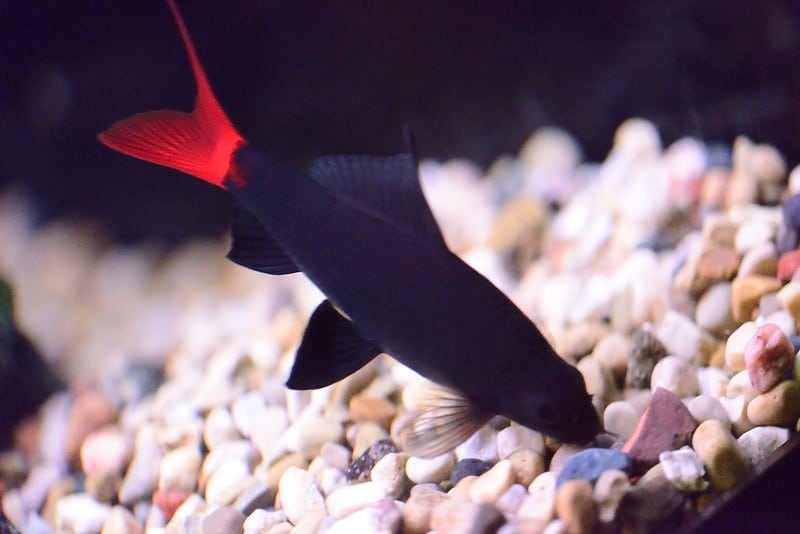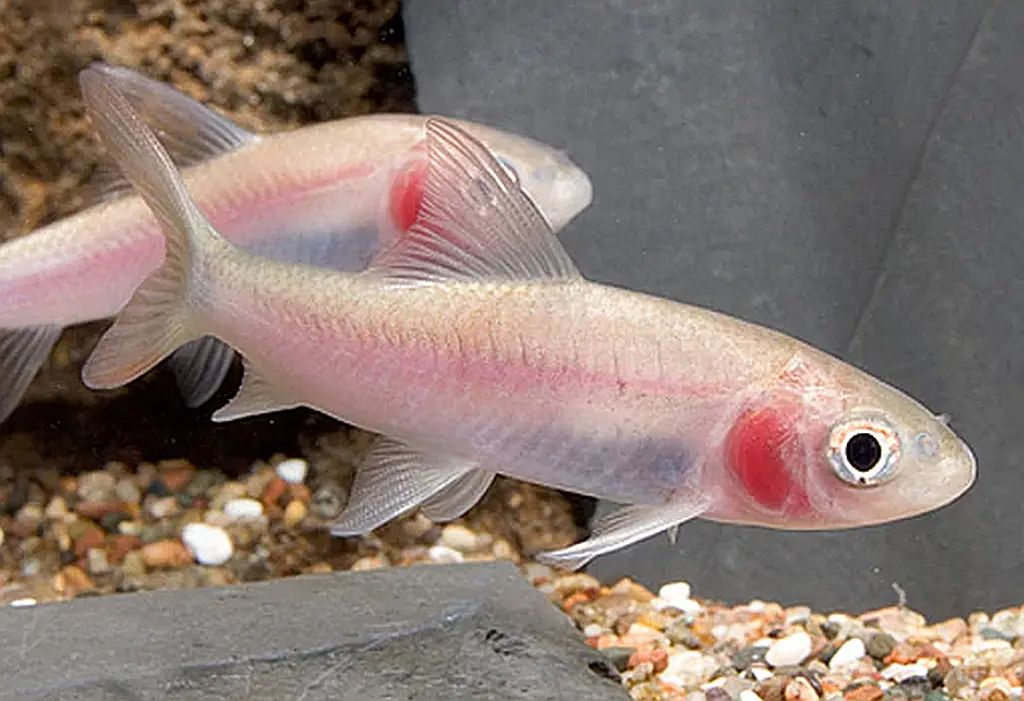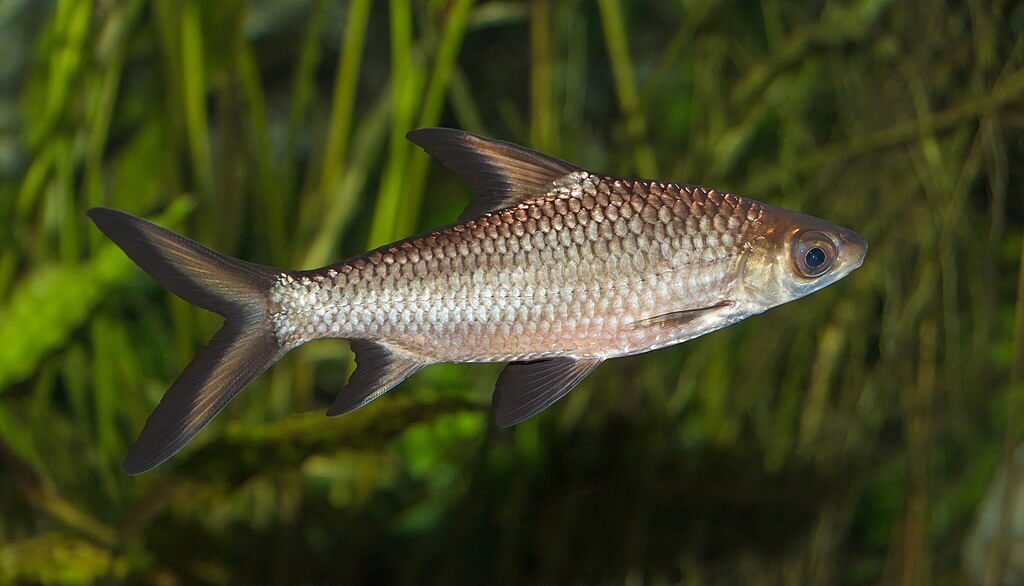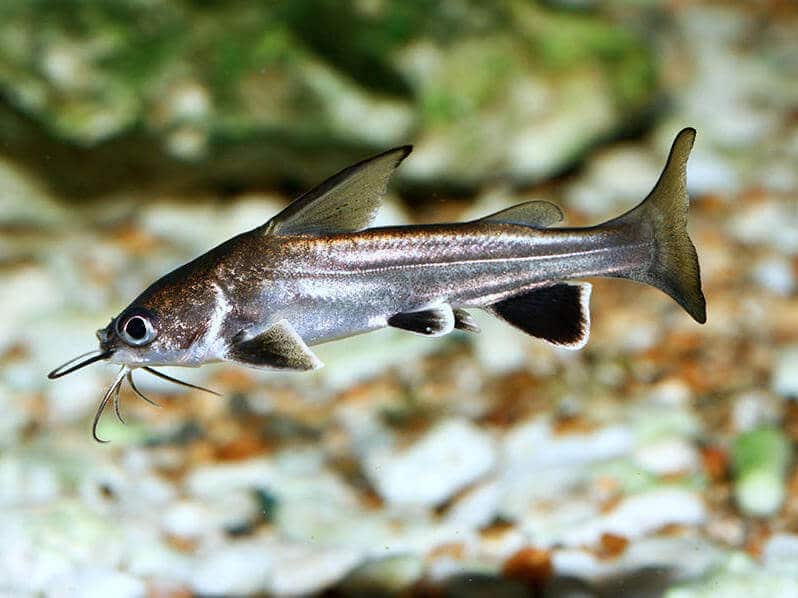Hearing the phrase freshwater aquarium sharks and home aquarium in the same sentence can be puzzling. But the fact is, besides the Bull Shark, other freshwater sharks are not as you may imagine them. They just share certain physical features of a shark and some are actually very small. Nonetheless, having a shark (no matter the species) at home is exciting!
Sometimes also known as imposters or mini sharks, these species are always a welcome addition to your tank. You should know that some species are more aggressive and can prey on smaller fishes.
If you’re planning to introduce one of them into your home aquarium but don’t know where to start, worry not! Today, we will look at 11 of the most popular freshwater sharks for your aquarium.
Table of Contents
What is a Freshwater Aquarium Sharks Actually?

Before jumping in, it seems appropriate to first understand what makes a freshwater aquarium fish a “shark”. The good news is there are several characteristics that distinguish them!
They all come from the Pangasiidae or Cyprinidae family, which are actually the species of catfish and carps respectively. Native to the tropics including areas in Southeast Asia and Africa, they share a home to many species of aquarium fish.
With pointed dorsal fins, bodies resembling torpedoes, and forked tails, they tend to swim actively in the mid to bottom water environment. In addition to being relatively aggressive, these similar traits have gained them the name of the shark!
On the downside, and true to its name, most of these sharks aren’t a good choice for beginner tank owners. A lot of them grow to be extremely aggressive and large! Although if you’re especially keen on keeping them, the small and peaceful Roseline Torpedo Shark would be the best choice.
Once you amass enough aquarium experience and expertise, you can start thinking about these fishes. In fact, they’re a common aquarium fish that you can find easily in most stores. Not to mention that they are easy to feed and quite adaptable.
As long as you know what each of the sharks is all about, then it’s all good! At the end of the day, they are a truly captivating breed that many aquarium hobbyists just cannot resist.
Without further ado, here are some of the many types of freshwater aquarium sharks.
Types of Freshwater Aquarium Sharks
There are many types of sharks for your aquarium. So, you should find the best one for you!
1. Roseline Torpedo Shark
The Roseline Torpedo Shark is sometimes known as the Roseline Shark or Denison’s Barb. As we have briefly touched upon, it’s probably one of the easiest and safest to keep. Especially for beginners and casual aquarists.
Hailing from India, these stunning fish look charming with the vibrant stripes that run along their bodies. The lateral stripes, usually red and yellow, match their tails too! Colors like gold and green are also common. One of its highlighted features is the pronounced dorsal fin, which is accentuated with a vivid and bright red stripe.
Roseline Sharks are considered the smallest freshwater sharks today and can reach up to 4.5 inches in length. Sure, it means those who prefer larger fishes won’t find them suitable. But it also makes these schooling fish agreeable in terms of temperament.
You shouldn’t worry about aggression as they are peaceful and won’t disturb the other tank mates. In fact, these sharks thrive in groups of 4 to 6 and may become more playful in a small school.
When it comes to water conditions, the only thing they really require is a strong current. That’s because Roseline Sharks naturally live in rushing streams. We also recommend for the temperature to be 60 to 77 degrees and at least 50 gallons of tank size.
2. Violet Blushing Shark

Moving on to the Violet Blushing Shark, they are also pretty passive. This species is ideal for community tanks as they’re not territorial, unlike most other freshwater shark species. They can grow to 12 inches, so you should still keep them with other medium-sized fish. Otherwise, they would see smaller ones as prey and even eat them!
The unique attribute to this fish is their appearance, which their name suggests. Their silvery-white bodies can gleam under powerful lighting, offering an ethereal look. Many aquarists covet them for their transparent body too. You can see through the organs and gills, which make these sharks look like they’re blushing.
The Violet Blushing Shark fares best in at least 125 gallons of water as they need plenty of space to swim around. In terms of temperature, keep it stable between 68 and 78 degrees. These are crucial to keep your fish happy and healthy!
Moreover, try not to overcrowd your tank with too many decorations. While plants and driftwood can help simulate a comfortable natural home for them, remember that swimming space is also important!
3. Bala Shark

On the other hand, Bala Shark is one of the few “gentle giants” among its other cousins. Although their size is between 10 to 12 inches (25-30 cm), these fish are generally respectful towards other fish species.
However, don’t take their relatively peaceful tendencies for granted! As Bala Sharks grow larger, they will still begin to look at some smaller creatures as prey. So, it will do to be careful.
These sharks have a dominating grey color that is complemented by vibrant stripes. Running on the forked tail and fins, the vivid yellow can offer a striking touch. Of course, they also have a prominent dorsal fin with charming colorations. It may stand out when perked up!
In general, they’re quite active and can spend hours swimming around. Keep them in groups if you would like to see some schooling behaviors. In terms of tank size, the bare minimum for Bala Sharks is 150 gallons.
They need around 77°F in water temperature and balanced pH of 6.5 to 8.0. Other than these strict water conditions, this fish species are rather straightforward. Any intermediate hobbyist should be able to easily care for them.
4. Iridescent Shark
Let’s move on to a large shark species: An iridescent Shark! They can measure up to 4 feet and are known for their long lifespan of 20 years or longer. As such, these sharks are more difficult to maintain and suitable only for expert aquarium owners. Indeed, caring for them can be a huge commitment.
Native to Southeast Asia, this species also got their name from the unique appearance. Young Iridescent Sharks have dark and shiny skin which lusters under illumination. Unfortunately, this feature gets more muted with age, and adult fish merely look dark and gray.
Another striking feature is the barbels on their head that make them look like catfish. They also have large fan-like fins and a bulbous body silhouette.
For water conditions, the best environment for these sharks would be 72 to 79 degrees, and between 6.5 and 7.5 in pH. The real challenge lies in feeding them because they need tons of food.
Make sure that you mix in what you feed Iridescent Sharks so they can get their nutrients. Because they are omnivores, they will eat a huge variety of things.
5. Red Tail Shark
Red Tail Sharks are a common freshwater aquarium fish species, native to Thailand. Unfortunately, their wild compatriots are considered critically endangered species. It is almost impossible to breed them at home, leaving the task up to a select few professional breeding facilities.
But what is this species so admired? Considering its distinctive red tail, it’s not difficult to see why. The striking red provides a captivating contrast to the rest of the body: a gleaming black.
The Red Tail Shark grows up to 6 inches and doesn’t need a massive tank. 55 gallons would be enough. They can also adapt well and thrive in waters between 72 to 79 degrees, as well as between 6.5 and 7.5 in pH.
They can be more aggressive and territorial as they get bigger, especially towards a fellow Red Tail Shark. Thus, providing plenty of space and a cave for the smaller fishes would be good.
6. Black Shark
The Black Shark is semi-aggressive and native to various regions across Malaysia. Most aquarists like them for their imposing all-black look. Its large dorsal fin will lay flat on their body when swimming but will stand tall when the fish is showing off.
At 24 inches, the Black Shark is quite large and needs a tank of at least 125 gallons. They’re also aggressive and predatory, so don’t house them with small species. However, other aggressive fishes can go along well with these sharks, such as several Cichlid species.
Despite being an omnivore like most sharks, the Black Shark is notorious for its preference of plants. Sure, they can eat anything, but their diet isn’t sustained only by protein! These fish enjoy plant-based foods.
One of the few things we can say about Black Sharks is that they need spacious swimming areas. You can even provide a few caves where they can rest.
7. Rainbow Shark

Just as its name suggests, the Rainbow Shark is a brilliant addition to any freshwater aquarium, in terms of its striking colors. They have bright red fins and tails that will stand out against the background. As such, they’re sometimes known as Red-Finned Sharks.
Each fin is red-colored and semi-transparent, so you can actually see its rays. In contrast to the dark black body, these sharks are nothing short of graceful. While they may be beautiful, they’re not suitable for beginner hobbyists.
This is because Rainbow Sharks can show serious aggression and territorial behaviors so that they often attack other fishes. The good news is that they swim only on the bottom, which means you can keep them with top dwellers.
These sharks grow up to 6 inches and need only 50 gallons in tank size. Moreover, they are omnivores and may even feed on algae inside the aquarium. You still have to supplement them with sinking foods like pellets, and sometimes live food! With these, you can easily keep your Rainbow Sharks happy.
8. Harlequin Shark
Harlequin Sharks are also on the smaller side, as far as sharks go, and measure around 6 inches. This means you can keep them in a smaller tank of around 40 gallons. Unfortunately, they can be very territorial and hate being around other fish.
This is especially true with those that look similar to themselves, which means you should not keep them with other freshwater sharks. Indeed, the Harlequin Shark is known to be an extremely solitary fish.
But this is not to say that you can’t keep them with other fishes. If the tank is large enough, you can also house another large species that swim in the upper waters. That’s because these sharks swim near the bottom and enjoy hiding.
On that note, Harlequin Sharks require plenty of hiding places made from rocks and driftwoods. Their natural habitat in the Congo River Basin teems with dense forest streams. They can feed on almost anything, including algae, microscopic animals, and other detritus.
In addition to this snacking habit, you should provide supplementary foods and keep their diet varied. Try sinking pellets, frozen and live foods! Overall, intermediate aquarists should be able to care for them easy enough.
9. Columbian Shark

Another freshwater shark species that would be quite a challenge is the Columbian Shark. They have stringent water conditions and are not fully freshwater sharks!
The younger fishes need brackish water, and you need to add a sprinkle of marine salt to keep them healthy. The specific gravity should be around 1.005 to 1.010. Growing around 10 to 12 inches, these sharks will thrive when the tank size is 70 gallons minimum.
If you are looking for a fish species that especially resemble sharks, then this is the one for you. Columbian Sharks boast a graceful sail-like dorsal fin, while their bodies come in a range of black, gray, and silver shades. They also have barbels on their heads, which are used for navigation and hunting.
In terms of behavior, the Columbian Shark can be predatory and tends to prey on smaller, non-aggressive creatures. Keep them well-fed and you can appease some of this aggression. We recommend a high-protein diet with live and frozen foods.
10. Silver Apollo Shark

Unlike a lot of freshwater aquarium sharks, the Silver Apollo Shark tends to swim near the surface. They spend a lot of time tracing the upper waters to search for food, though they may explore the bottom for prey.
Its dorsal fin is quite large but is located near the tail, creating a unique profile. Its pointed snout even has some whiskers too! Moreover, their torpedo-like body is usually olive green, complemented with a dark stripe that runs along its length.
Yes, these sharks are built to swim. You should ensure that the tank has plenty of space so they can swim freely. In fact, Silver Apollo Sharks can spend hours just darting around the aquarium. That’s because they naturally live in rapid streams and are active, powerful swimmers. The tank should be at least 120 gallons.
While this shark species can be aggressive and prey on smaller creatures, they do enjoy to shoal. They will thrive in larger groups!
11. Chinese High-Fin Banded Shark
Last but not least, we have the Chinese High-Fin Banded Shark. This species is suitable only for gigantic tanks and public aquariums, as they can grow up to 5 feet and need at least 800 gallons of water! Surely, it’s not something most home tanks can accommodate.
Despite their intimidating size, these sharks are quite docile and can live alongside a lot of other fish. One thing to note is that they’re a schooling species and must be kept in a larger group. Don’t even try to keep them alone, as they will not survive and may even die.
Younger Chinese High-Fin Banded Sharks have a brown body with three iconic stripes and a prominent dorsal fin. The sail-like fin stands tall and majestic. Uniquely, these eccentric features taper down as the fish grows larger. It dulls out in color while the dorsal fin remains the same size, even as the rest of the fish becomes bigger.
It is interesting that these sharks live in cold water, not tropical like other freshwater sharks. They thrive in ponds and tanks that are not heated. Like goldfish and koi, they may even hibernate if the water temperature gets to around 40F!
It’s Time To Pick
These are some of the most common freshwater aquarium sharks and we hope it can help you find the right one for your tank. They range in care difficulty and size, so it’s important to understand your personal needs and capabilities.
Some freshwater shark species are better suited for beginners, while others for more experienced aquarists. Just make sure you know what’s best for the shark that you choose. Good luck!






